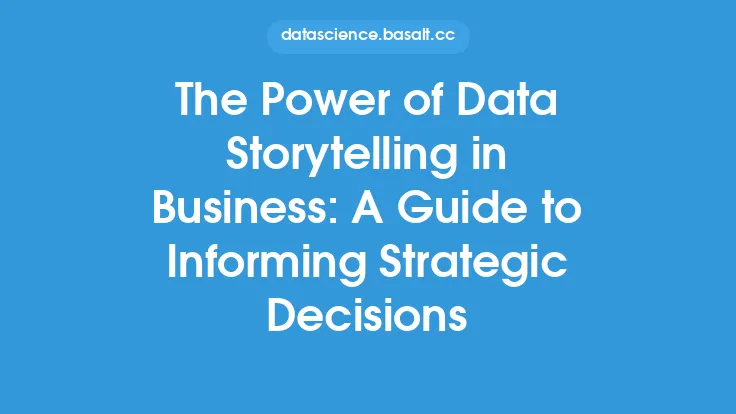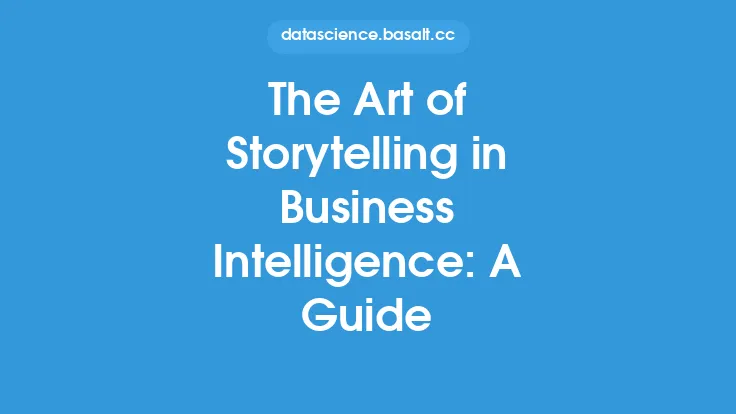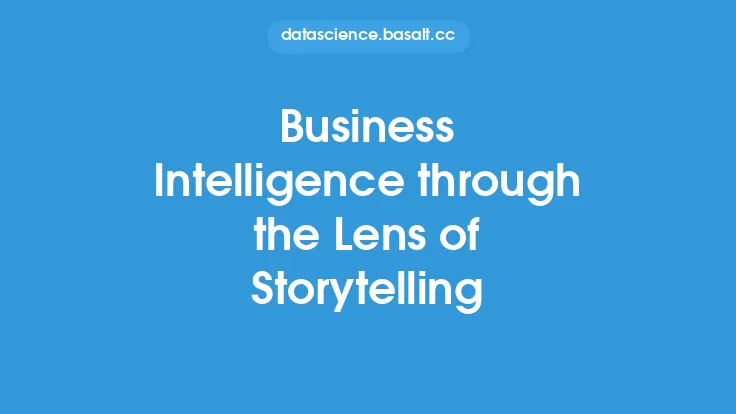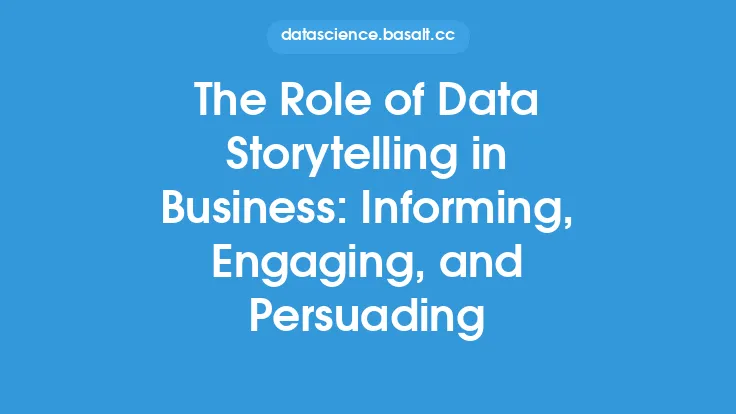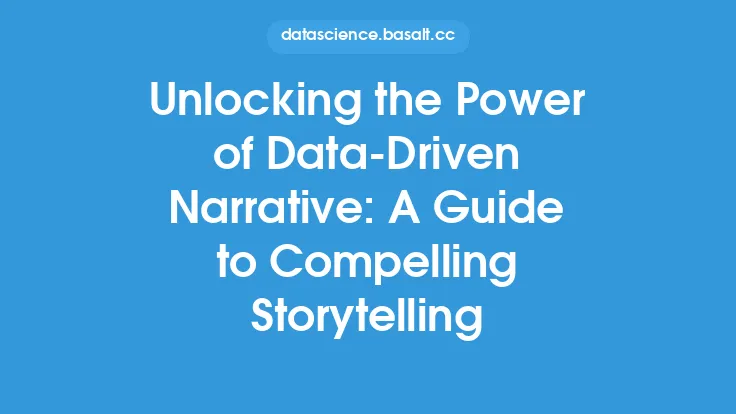In the realm of business analytics, the ability to convey complex data insights in a clear and compelling manner is crucial for driving decision-making and action. This is where the power of storytelling comes into play, as it enables analysts and professionals to transform raw data into a narrative that resonates with stakeholders and sparks meaningful conversations. By leveraging the art of storytelling, businesses can unlock the full potential of their data, foster a culture of data-driven decision-making, and ultimately drive growth and success.
Introduction to Storytelling in Business Analytics
Storytelling in business analytics involves the use of narrative techniques to communicate data insights and findings in a way that is both informative and engaging. This approach recognizes that data, in and of itself, is merely a collection of numbers and statistics, but when woven into a story, it can become a powerful tool for conveying meaning and context. By using storytelling techniques, analysts can create a narrative that highlights key trends, patterns, and insights, making it easier for stakeholders to understand and act upon the data.
The Benefits of Storytelling in Business Analytics
The benefits of storytelling in business analytics are numerous and well-documented. For one, it enables analysts to communicate complex data insights in a way that is easy to understand, even for non-technical stakeholders. This helps to ensure that data-driven decisions are informed by a deep understanding of the underlying trends and patterns. Additionally, storytelling helps to create a sense of empathy and connection with the data, making it more relatable and memorable. This, in turn, can lead to increased engagement and buy-in from stakeholders, as well as a greater willingness to take action based on the insights presented.
Key Elements of Effective Storytelling in Business Analytics
Effective storytelling in business analytics involves several key elements, including a clear and concise narrative, compelling visuals, and a focus on insights and recommendations. The narrative should be structured in a way that is easy to follow, with a clear beginning, middle, and end. The use of compelling visuals, such as charts, graphs, and tables, can help to illustrate key points and make the data more engaging. Finally, the story should be focused on insights and recommendations, rather than simply presenting a collection of data points. This helps to ensure that the story is actionable and relevant to the business, rather than simply a dry presentation of facts and figures.
Technical Aspects of Storytelling in Business Analytics
From a technical perspective, storytelling in business analytics often involves the use of data visualization tools and techniques. These tools enable analysts to create interactive and dynamic visualizations that can be used to illustrate key trends and patterns in the data. Some common data visualization tools used in business analytics include Tableau, Power BI, and D3.js. Additionally, storytelling in business analytics may involve the use of statistical modeling and machine learning techniques, such as regression analysis and clustering algorithms. These techniques can help to identify complex patterns and relationships in the data, which can then be used to inform the narrative and drive insights.
Best Practices for Storytelling in Business Analytics
To get the most out of storytelling in business analytics, there are several best practices that analysts and professionals should follow. First, it's essential to know your audience and tailor the narrative accordingly. This involves understanding the level of technical expertise and business acumen of the stakeholders, as well as their key concerns and priorities. Second, the narrative should be focused on insights and recommendations, rather than simply presenting a collection of data points. Third, the use of compelling visuals and interactive elements can help to make the data more engaging and memorable. Finally, the story should be iterative and open to feedback, with a willingness to refine and revise the narrative based on stakeholder input and feedback.
Common Challenges and Pitfalls
Despite the many benefits of storytelling in business analytics, there are several common challenges and pitfalls that analysts and professionals should be aware of. One of the most significant challenges is the risk of oversimplifying complex data insights, which can lead to misunderstandings and misinterpretations. Additionally, the use of storytelling techniques can sometimes be seen as manipulative or misleading, particularly if the narrative is not grounded in a thorough and objective analysis of the data. To avoid these pitfalls, it's essential to maintain a focus on objectivity and transparency, while also being mindful of the potential biases and limitations of the data.
Future Directions and Emerging Trends
As the field of business analytics continues to evolve, there are several emerging trends and directions that are likely to shape the future of storytelling in this domain. One of the most significant trends is the increasing use of artificial intelligence and machine learning techniques, which can help to automate the process of data analysis and insights generation. Additionally, the rise of cloud-based data platforms and collaboration tools is enabling greater flexibility and scalability in the way that data is analyzed and presented. Finally, the growing importance of data storytelling in business analytics is driving a greater need for analysts and professionals to develop their skills in this area, including the ability to communicate complex data insights in a clear and compelling manner.
Conclusion
In conclusion, the power of storytelling in business analytics is a game-changer for organizations looking to drive data-driven decision-making and action. By leveraging the art of storytelling, analysts and professionals can transform raw data into a narrative that resonates with stakeholders and sparks meaningful conversations. Whether through the use of data visualization tools, statistical modeling techniques, or emerging trends like artificial intelligence and machine learning, the possibilities for storytelling in business analytics are endless. As the field continues to evolve, it's essential for analysts and professionals to stay ahead of the curve, developing their skills in data storytelling and maintaining a focus on objectivity, transparency, and insights-driven decision-making.
